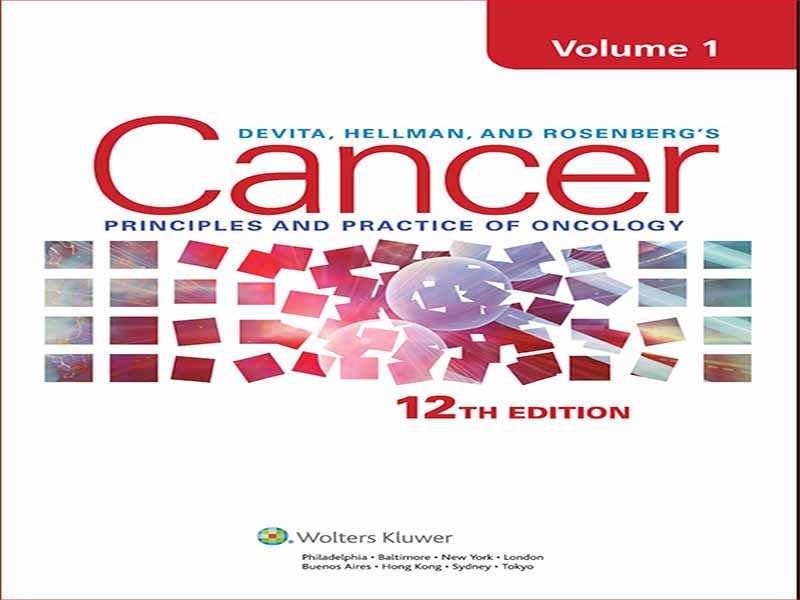- عنوان کتاب: Cancer Principles And Practice Of Oncology-Volume 1
- نویسنده: Nicole Dernoski, Joe Cho
- حوزه: سرطان
- سال انتشار: 2023
- تعداد صفحه: 1506
- زبان اصلی: انگلیسی
- نوع فایل: pdf
- حجم فایل: 29.5 مگابایت
بروز بسیاری از انواع سرطان در جمعیت ها، مناطق و دوره های مختلف به طور قابل توجهی متفاوت است. برخی از این تغییرات نشان دهنده تفاوتها در تشخیص، کامل بودن گزارشها و طول عمر در کشورهای مختلف است، اما تغییرات زمانی در خطر (مختص سن یا استاندارد شده) انواع خاصی از سرطان در داخل کشورها و تغییر در خطر در بین مهاجران یک کشور به دیگری نشان می دهد که بیشتر این تغییرات ناشی از عوامل محیطی و بیولوژیکی است. به عنوان مثال، سرطان سینه و روده بزرگ در چینی ها و ژاپنی های مقیم آسیا کمتر شایع است. اما خطر ابتلا به این سرطان ها در میان نسل های بعدی مهاجران ژاپنی و چینی به ایالات متحده و سایر کشورهای غربی به تدریج افزایش یافت زیرا آنها به طور فزاینده سبک زندگی بی تحرک، رژیم غذایی ناسالم و الگوهای تولید مثلی (فقط سرطان سینه) را که عوامل خطر شناخته شده برای این سرطان ها هستند، در پیش گرفتند. .1 برعکس، خطر ابتلا به سرطان های مرتبط با عفونت مانند سرطان معده و کبد در نسل بعدی مهاجران ژاپنی و چینی به ایالات متحده (کالیفرنیا) کاهش یافت و در نسل دوم به بومیان کالیفرنیا نزدیک شد. به این ترتیب، الگوهای جهانی سرطان سرنخ هایی در مورد علت انواع مختلف سرطان و سهم نسبی عوامل خطر ارثی در مقابل اکتسابی برای سرطان ارائه کرده است. این الگوها به طور فزاینده ای برای ارزیابی تأثیر مداخلات پیشگیرانه و پیش بینی نیازها و هزینه های آتی درمان سرطان برای سیستم های مراقبت بهداشتی در کشورهای مختلف مورد استفاده قرار می گیرند. برای مثال، بر اساس تفاوت های جغرافیایی در مرگ و میر ناشی از سرطان در ایالات متحده، دال و پتو تخمین زدند که اکثر سرطان ها در این کشور به عوامل خطر محیطی نسبت داده می شوند و به طور بالقوه قابل اجتناب هستند. و شیوع طبق برآورد GLOBOCAN 2020، نمایه ای جامع از خطر و بار سرطان در 185 کشور، تهیه شده توسط آژانس بین المللی تحقیقات سرطان (IARC)، شاخه ای از سازمان بهداشت جهانی (WHO).4،5 تمرکز اصلی این فصل بر توصیف خطر و بار سرطان در سطح جهانی و ارزیابی تنوع جغرافیایی و زمانی خطر و بار سرطان است. ما بزرگی و توزیع بیماری را به طور کلی و برای انواع اصلی سرطان در سال 2020 در سرتاسر جهان توصیف میکنیم و به طور خلاصه در مورد عوامل خطر مرتبط و چشمانداز پیشگیری و کنترل اظهارنظر میکنیم و با پیشبینی بار بیماری در سال 2040 پایان میدهیم. الگوهای جهانی خطر و بار سرطان پیامدهای عمیقی بر سیستم های مراقبت های بهداشتی و نابرابری های بهداشتی در بیماری های غیرواگیر دارد.
The occurrence of many types of cancer varies considerably across different populations, regions, and periods. Some of this variation reflects differences in detection, completeness of reporting, and longevity in different countries, but the temporal changes in risk (age-specific or age-standardized) of specific types of cancer within countries and changes in risk among migrants from one country to another indicate that much of this variation is due to environmental and biological factors. For example, cancers of the breast and colon are less common in Chinese and Japanese residing in Asia. But the risk of developing these cancers progressively increased among subsequent generations of Japanese and Chinese migrants to the United Sates and other Western countries as they increasingly adopt sedentary lifestyle, unhealthy diet, and reproductive patterns (breast cancer only), known risk factors for these cancers.1 Conversely, the risk of infection-related cancers such as stomach and liver cancers declined in the subsequent generation of Japanese and Chinese migrants to the US (California), approaching those of California natives by the second generation.2 As such, global patterns of cancer have provided clues about the etiology of various types of cancer and the relative contribution of inherited versus acquired risk factors for cancer. Increasingly, these patterns are used to assess the impact of preventive interventions and to forecast the future needs and costs of cancer treatment for health care systems in individual countries. For example, based on the geographic disparities in cancer mortality in the United States, Doll and Peto estimated that the majority of cancers in the country were attributable to environmental risk factors and are potentially avoidable.3 This chapter describes global patterns in cancer incidence, mortality, and prevalence as estimated by GLOBOCAN 2020, a comprehensive profile of the risk and burden of cancer in 185 countries, produced by the International Agency for Research on Cancer (IARC), an arm of the World Health Organization (WHO).4,5 The primary focus of this chapter is on a description of the cancer risk and burden at the global level and an assessment of the geographic and temporal variability of cancer risk and burden. We describe the magnitude and distribution of the disease overall and for the major cancer types in 2020 worldwide, commenting briefly on the associated risk factors and prospects for prevention and control, and ending with a projection of the burden of the disease in 2040. The changing global patterns of cancer risk and burden have profound implications for health care systems and health disparities in noncommunicable diseases.
این کتاب را میتوانید بصورت رایگان از لینک زیر دانلود نمایید.
Download: Cancer Principles And Practice Of Oncology-Volume 1


































نظرات کاربران